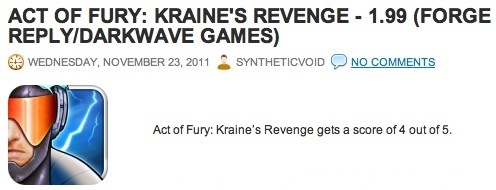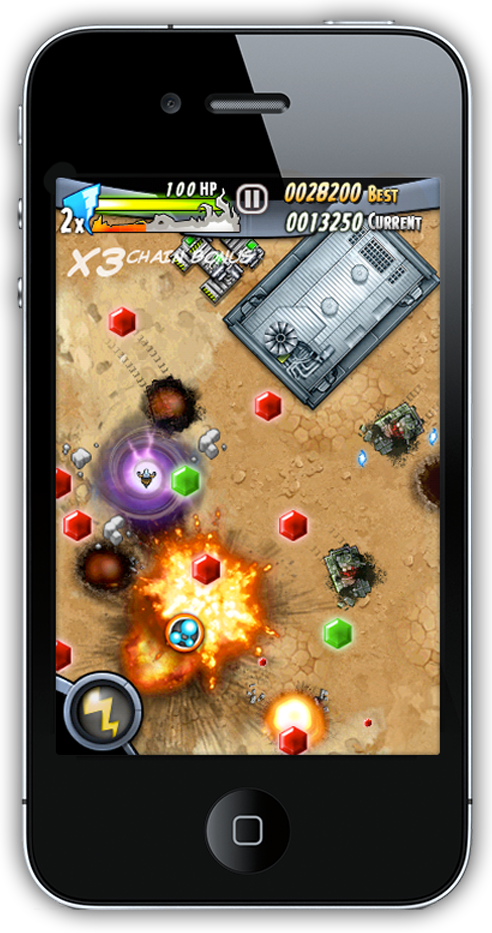Act of Fury – New & Noteworthy section of the App Store
Act of Fury is featured in the New & Noteworthy in the general section of the App Store in US and China, while appears as one of the most noteworthy in Games section for UK, Canada, Germany, Italy, Spain, France.
148Apps has also rated the game 4 out of 5 with a published review.





